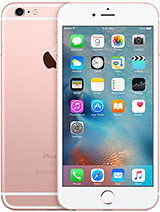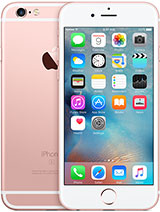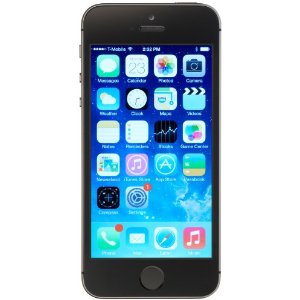By . Last updated Mar 11, 2017.
The ReviewGist pick for the best smartphone for the visually impaired for early 2017 is the Apple iPhone 6S Plus. The Apple iPhone 6S Plus supports the latest iOS operating system which lends itself to a litany of accessibility features that are useful for people with low vision.
Starting with a fingerprint reader which makes it easy to unlock, an inbuilt VoiceOver app which can readout everything on the screen, large 5.5 inch screen with support to increase text size/contrast for improved readability, a text-input system made accessible with audible clues and lastly out-of-the-box support for a wide range of Braille Devices makes the iPhone 6S Plus the best suited for people with impaired vision.
However, the VoiceOver app is the single best reason why the iPhone are perfect for the visually impaired people. Android phones also has a similar Talk-Back feature, but the comprehensiveness and the consistency of the VoiceOver app blows it out of the water. You can read more about the VoiceOver app and other accessibility features on the iPhones here.
Different versions of the iPhone 6S Plus are supported by most carriers throughout the US, including AT&T, Sprint and Verizon, so you can get one no matter which network you are on.
iPhones supporting iOS version 7 and above have most of the features which makes the iPhone 6S the best for the people with low vision, so our listing of the best options for the visually impaired people below includes the all of the latest iPhone versions. We have not included the Apple iPhone SE, which is the latest iPhone model, because it comes with a smaller 4 inch screen and will decrease fidelity when text size is increased. If for some reason you are ok with that limitation though, the Apple iPhone SE is a great budget option for the visually impaired.

#1 |
#2 |
#3 |
#4 |
#5 |
|
|---|---|---|---|---|---|
|
|
|
|
|
|
|

|

|

|

|

|
|
|
|
|
|
|
|
|
|
|
|
|
|
|
|
| Release Date |
|
|
|
|
|
| Digital Camera Resolution |
|
|
|
|
|
| Installed RAM (GB) |
|
|
|
|
|
| Screen Size(Diagonal) |
|
|
|
|
|
| Front Webcam Resolution |
|
|
|
|
|
| Processor Type |
|
|
|
|
|
| Battery Capacity |
|
|
|
|
|
| Operating System |
|
|
|
|
|
| Carrier |
|
|
|
|
|
|
|
|
|
|
For the visually impaired, the best cellphones have tactile keypads, advanced personal assistants and screen reading software to make them more accessible and usable. Additionally, mobile phone manufacturers are releasing more applications that enable the blind to use cell phones more easily. Most applications designed to make cellphones more accessible for the blind are relatively similar in the way they function and the features they offer. Nevertheless, there are several noteworthy apps available.
With newer iPhones, Apple ships the Voiceover application that produces voice prompts whenever the user touches the screen. The application informs the user of the icon, link or menu option upon which his finger is touching on the screen. This simple approach helps blind or limited-sight users navigate an iPhone screen or window with audible voice prompts. Additionally, Apple provides the personal assistant application, Siri, on its iPhones to offer voice searches and spoken guides or directions to users. The voice search and reader functions in Siri are invaluable in making iPhones usable and accessible for blind users.
While Apple has introduced several blind-user-friendly features in their iPhones, they are not alone. For Android users, Google Now performs many of the same tasks as Apple's Voiceover and Siri apps. Other assistant and reader applications used on mobile phones include Mobile Speak and Talks. The good thing about Mobile and Talk is they are usable on many compatible model phones and not tied to a specific manufacturer or operating system. Other accessibility options include apps that convert text messages into audible messages, and vice versa, so blind users can take advantage of the benefits of SMS technology.
BlackBerry, Motorola and other manufacturers produce phones with QWERTY keypads. QWERTY keypads use a layout similar to standard computer keyboards and are a great option for people who're unable to see. Since the key layout is identical to a keyboard, blind people with basic typing skills are able to use a phone to type emails, send text messages or to chat. One downside with QWERTY keypads, though, is that they are generally harder to use with one hand or when in a hurry.
For a blind user, QWERTY models are not the only keypad options. Nevertheless, limited-sight or blind users should seek out a phone with sufficiently large and evenly spaced keys that enable individual sensing. Another option blind users should consider is an external Braille keyboard that connects to a phone and provides a tactile interface to enhance readability.
Aside from the applications and features mentioned above, there are phone enhancements that cater to people with failing eyesight. Features such as colorful keypads with buttons that light up, large high-contrast screens and themes or color schemes designed to improve contrast and readability can all help limited-sight people use their cellphones more easily. Many modern also include a "Large Font" feature that lets the user select large-scale fonts for reading and typing. There are even phones with keypads that emit sound when the user pushes a button - the tone produces differing from key to key.
If that's not enough, the best cellphones for the blind also offer voice-dialing features that recognize entries in the phone book and places a call to the person when the user says the name of the contact. Finally, some high-end phones also include voice-guided GPS, which enables users to find their way around in metropolitan areas with only audible instructions and prompts.
© 2025 ReviewGist.com. All Rights Reserved.
Best Cell Phone For Blind - 2017